Chickpea Foam – Taste Safe Sensory Bin For Babies And Toddlers
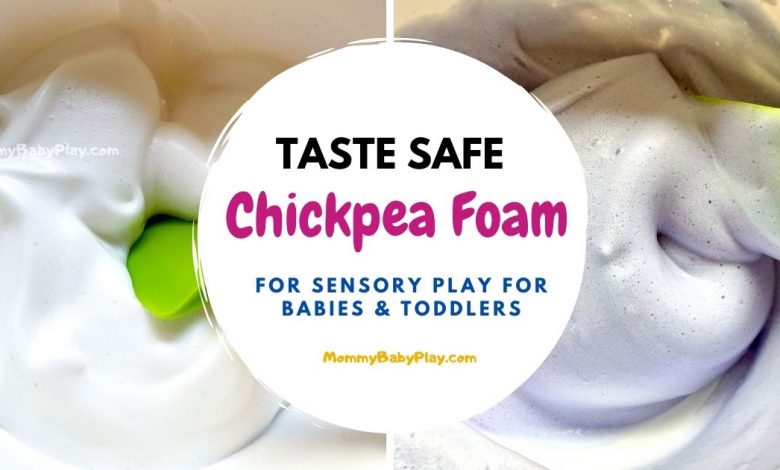
This Chickpea Foam is a super simple, natural sensory bin filler which is perfect for babies and toddlers. It also very pleasant to touch.
So if you’re looking for a taste safe, awesome, unusual sensory bin idea for your baby and even bigger kids, this chickpea foam ticks all the boxes and much more.
With a couple of simple adjustments, which I’ll show you below you can easily offer this activity even for sensitive babies and toddlers. For examples, if they don’t like to touch sensory bin filler with their hands or don’t like their hands get dirty, you get the idea.

Here’s why you should try it:
- Chickpea foam is very pleasant to touch
- It’s made of natural ingredients
- Chickpea foam is taste safe and edible (with neutral bean, well, chickpea taste).
- No cooking required.
- It holds its shape very well and even longer than shaving foam = extended playtime!
- You’re not wasting any food AND
- You can make a delicious hummus or soup afterwords.
- It’s perfect for very young babies but bigger kids love it too.
- It makes for a great sensory bin for siblings play.
- Super quick and easy to whip up – even a toddler can make it (quite literary! – see pictures).
I can probably go on, but let’s stop here and actually see how to make chickpea foam for sensory play.
By the way, if you haven’t given this a thought yet, check out why sensory play is so important for little hands.
What You Need
1-2 cans of cooked chickpeas
Standing mixer or handheld mixer
1 tsp of cream of tartar (optional)
Food coloring (optional)
How To Make Chickpea Foam
Strain the liquid from a can or two of chickpeas.

Beat it with a mixer on high speed until stiff peaks form.
As an option, add a teaspoon for cream of tartar. It helps the foam hold its shape for longer.
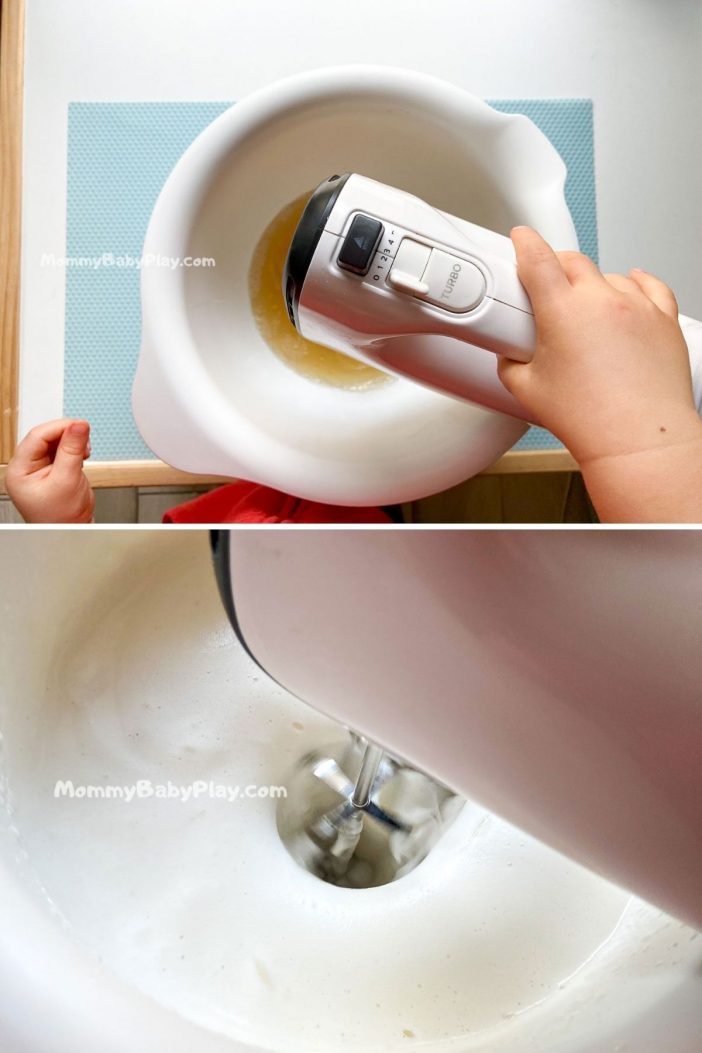
Another optional ingredient is food coloring if you want to make colorful sensory foam. For example if you plan to use it for small world play or have a particular theme in mind or simply want to have 2 or more color options for play.
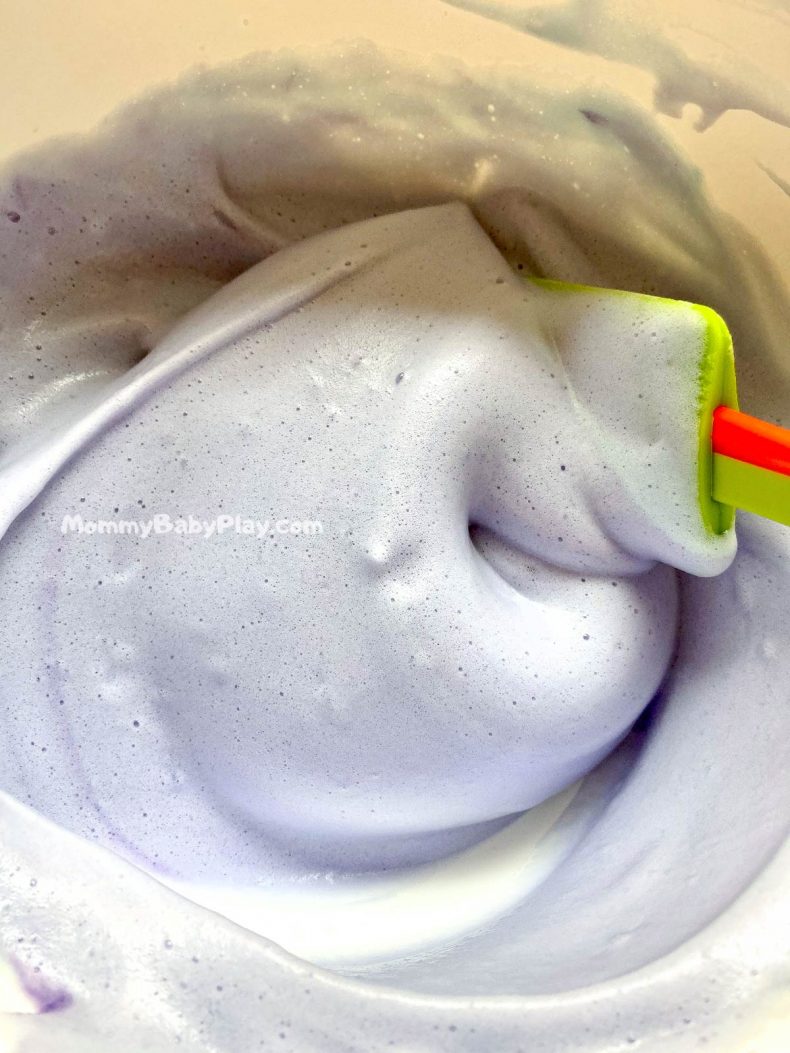
Chickpea Foam Sensory Play Ideas
The first time we tried this activity, I simply whipped up some chickpea foam and dumped it in a big plastic container the one I’m sure you already use for sensory play. I’ve also added a couple of tools like ladle and spoons and let him explore.
To my surprise my little one was not really happy with it, he was very suspicious and hated touching the foam with his hands.
So after a couple of minutes of frustrations we ended this play.
I haven’t spent time and effort making anything fancy so I was happy we did try it and now I had good food for thought how can adapt this for MY child.
So next time around, I did a completely different set up, which was a BIG HIT!
I had the idea of cupcake decoration since he really love muffins.
But here’s how it turned out.
Chickpea Foam Sensory Bin
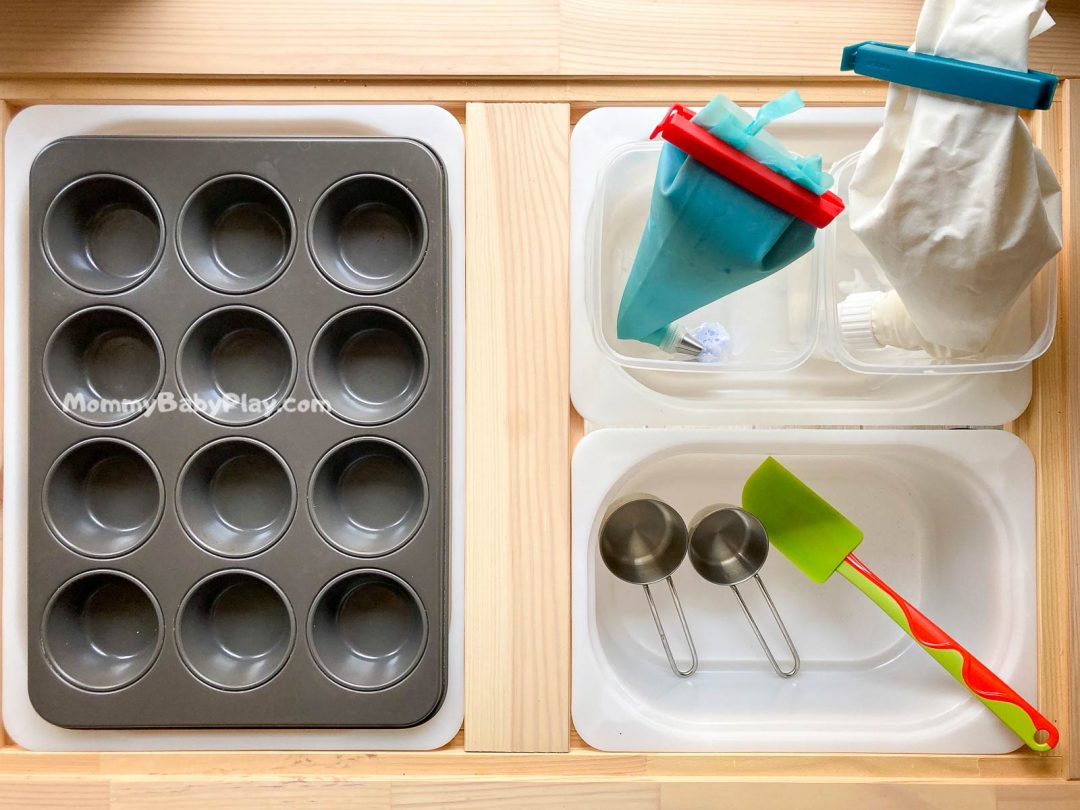
Set Up Time
4 minutes (time to make chickpea foam and collect the tools)
Resources:
- Chickpea Foam from the recipe below (colors of your choice)
- Big plastic container or IKEA Flisat table.
- A couple of smaller containers for tools
- Muffin tin
- Pastry bags and tips
- Scoops, measuring cups, spatula
- Coffee grinds in salt shake or similar dispenser (optional)
Set Up
I did my set-up in IKEA Flisat sensory table but you can do yours in any type of big plastic container.
Arrange muffin tin, container with tools and container with pastry bag filled with chickpea foam.
Show and assist (if needed!) your little one squeezing the foam out of the pastry bags.
EXTRA TIP: place a few straps of paper towel or a washcloth in the bin and encourage your toddler to clean his hands whenever he wants/needs.
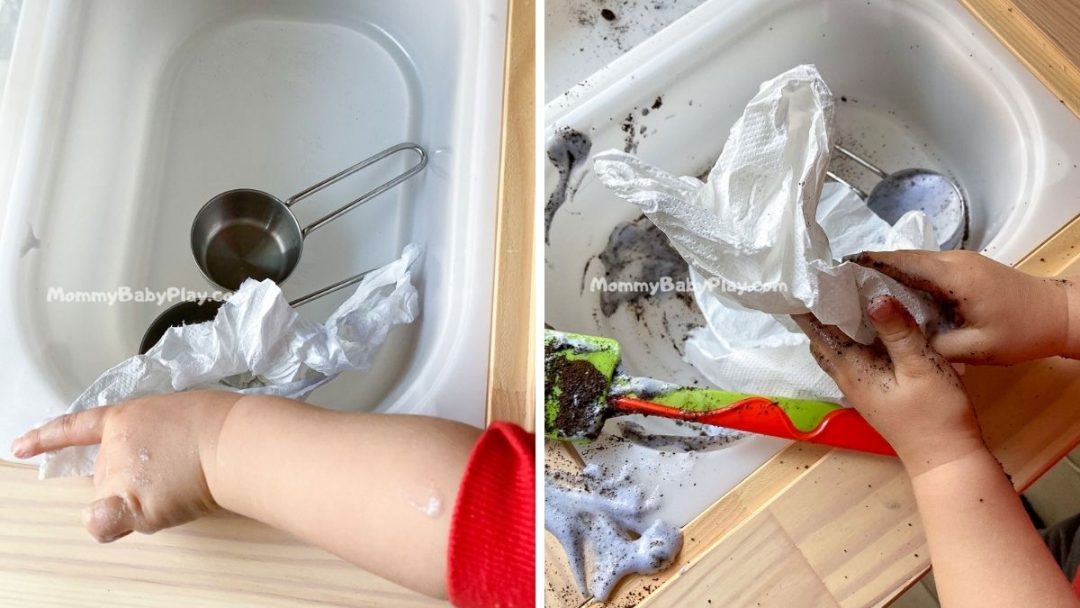
Our Experience & Tips Playing with Chickpea Foam Sensory Bin
- Using pastry bags really did the trick. It didn’t turn out into cupcake decoration activity as I thought it would ahah, but my little one was really happy and engaged squeezing the foam out of the pastry bags.
TIP 1: use robust pastry bags and a clip to prevent it from opening when squeezing. Silicone pastry bags are the best. Nice sturdy clips are from IKEA.
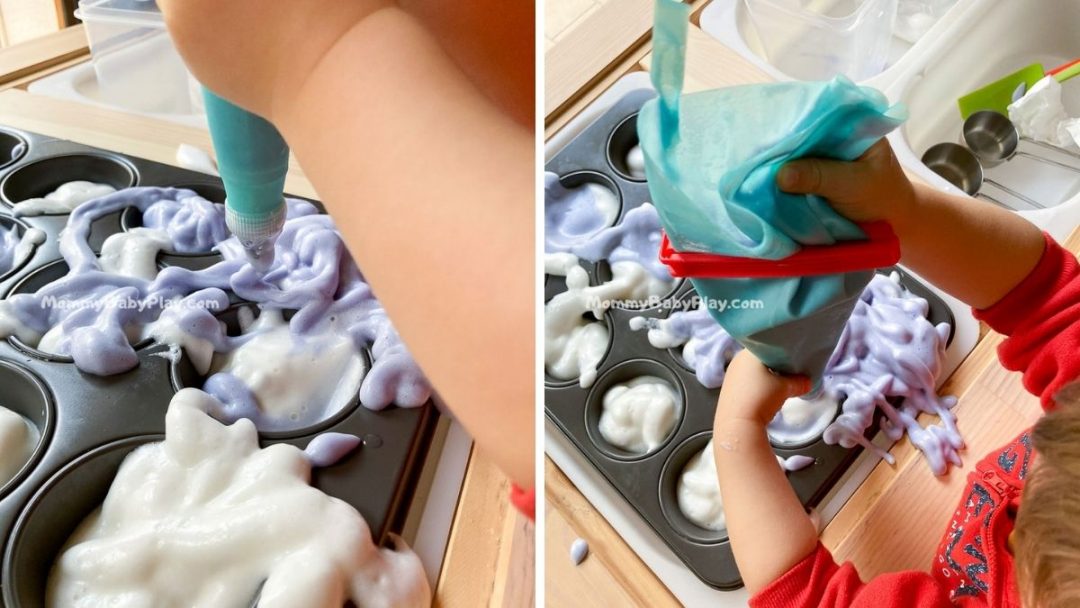
TIP 2: don’t fill the pastry bag to the rim or it’ll overflow when squeezed.
- We used quite a few of paper towel straps, whenever he wanted to clean his hands. We also did a few trips to the bathroom to wash hands. With clean hands he was eager and happy to play again.
- Since we made chickpea foam together, he saw me adding cream of tartar powder. I’ve put it away from his reach but not out his sight (which I encourage you to consider). At some point he spotted the container and wanted to pour the powder out of it.
Luckily I had another empty and clean container from cream of tartar and I filled it with dry coffee grinds that I saved earlier for wash the animal sensory bin but actually never got to it (familiar, right? :D)
He had an absolute blast emptying the coffee grinds on chickpeas foam. It also had a nice contrast of colors.
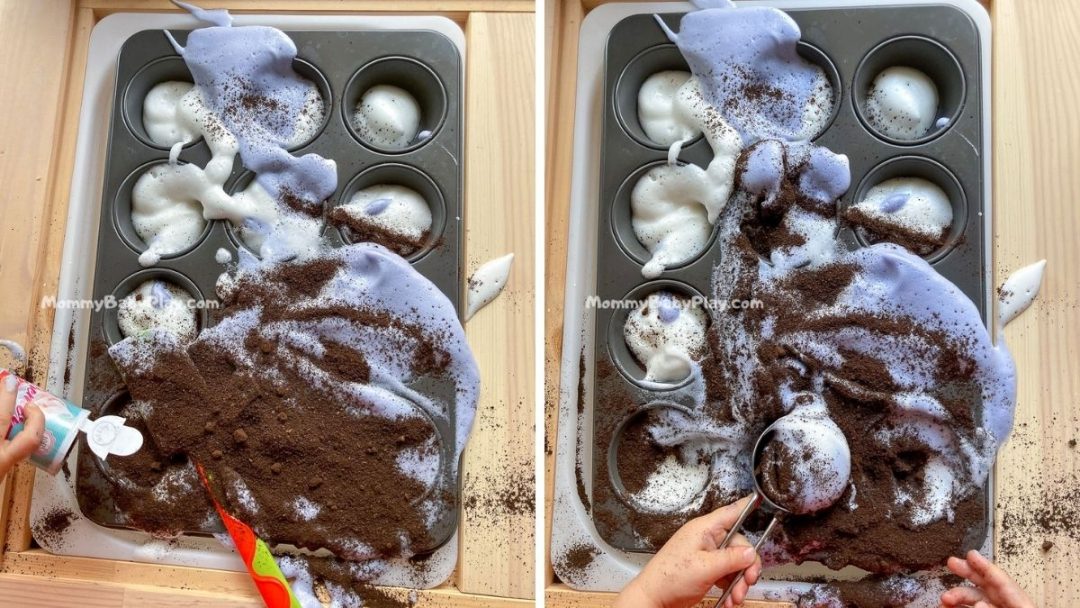
TIP: Keep cream of tartar container out of reach and out of SIGHT or prepare some coffee grounds in advance.
Probably you can use flour or other similar and safe substance but I really liked how coffee grounds made a nice contrast of colors.
- After about good 40 minutes, when my little one tried all possible manipulations with chickpea foam and coffee grounds he started getting to the next level – aka making a mess. Flipping muffin tin upside down, attempting to take foam outside the containers – that was a signal to me that it’s time to stop the activity which so far has been very low mess.
TIP 1: Finishing the activity once you see your child looses interest or starts making a mess or doing silly things with the materials you don’t want him to do. Try to give a few minutes of notice that you’re ending the activity so it’s expected and doesn’t turn into a tantrum.
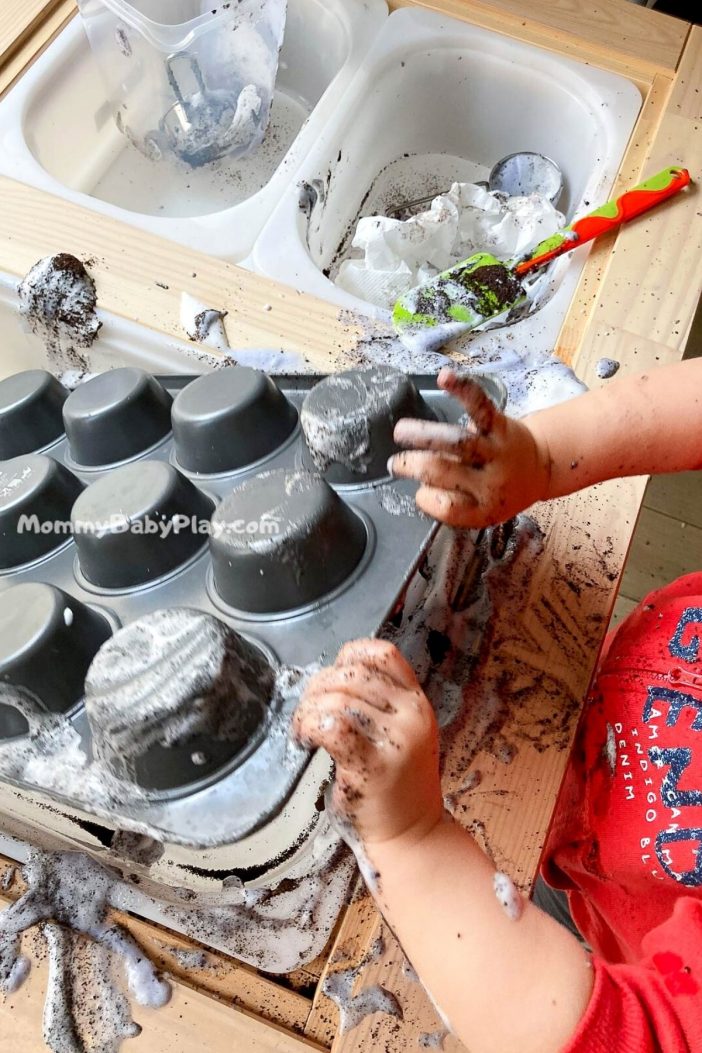
TIP 2: Keep your kitchen counter empty before starting this activity so that you can remove ALL the materials quickly and avoid any mess that can happen while you remove items one by one.
- Once done with this sensory bin we did most of the clean up together. Mister Messy hands was asked to bring his broom and his brush and he helped cleaning the table the some few spills on the floor.
TIP: Use the opportunity to teach your little one how to do the clean up after the activity. Toddlers generally are very happy to be involved in ALL sorts of tasks, so clean up with be perceived as an extension of the activity.
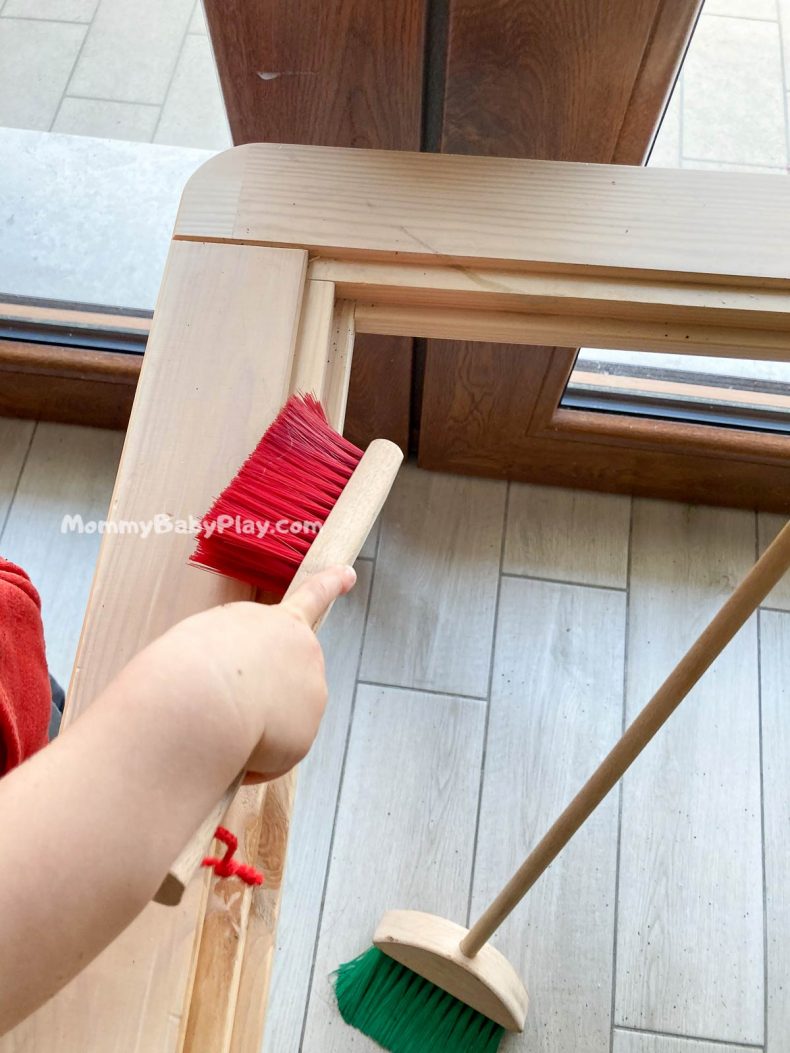
There you have it, an amazing chickpea foam recipe made using a discard material (liquid from canned chickpeas) and a real life example how this can be set up and modified following the child.
Did you know that Chickpea Foam has other uses?
It’s widely used in vegan recipes and in that realm it’s know as aquafaba.
It serves as a replacement for egg whites.
Who could have known!
If you were not yet familiar with this magic chickpea foam AKA aquafaba now you have a simple recipe that you don’t even need to print out.
From now on, never throw away the liquid from the can of chickpeas.
If you try it, I’d love to hear how you like it!

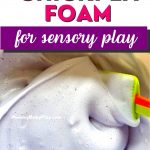


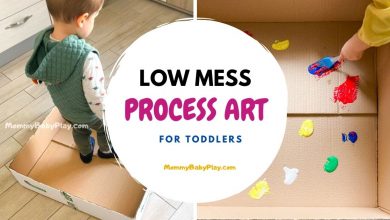


6 Comments